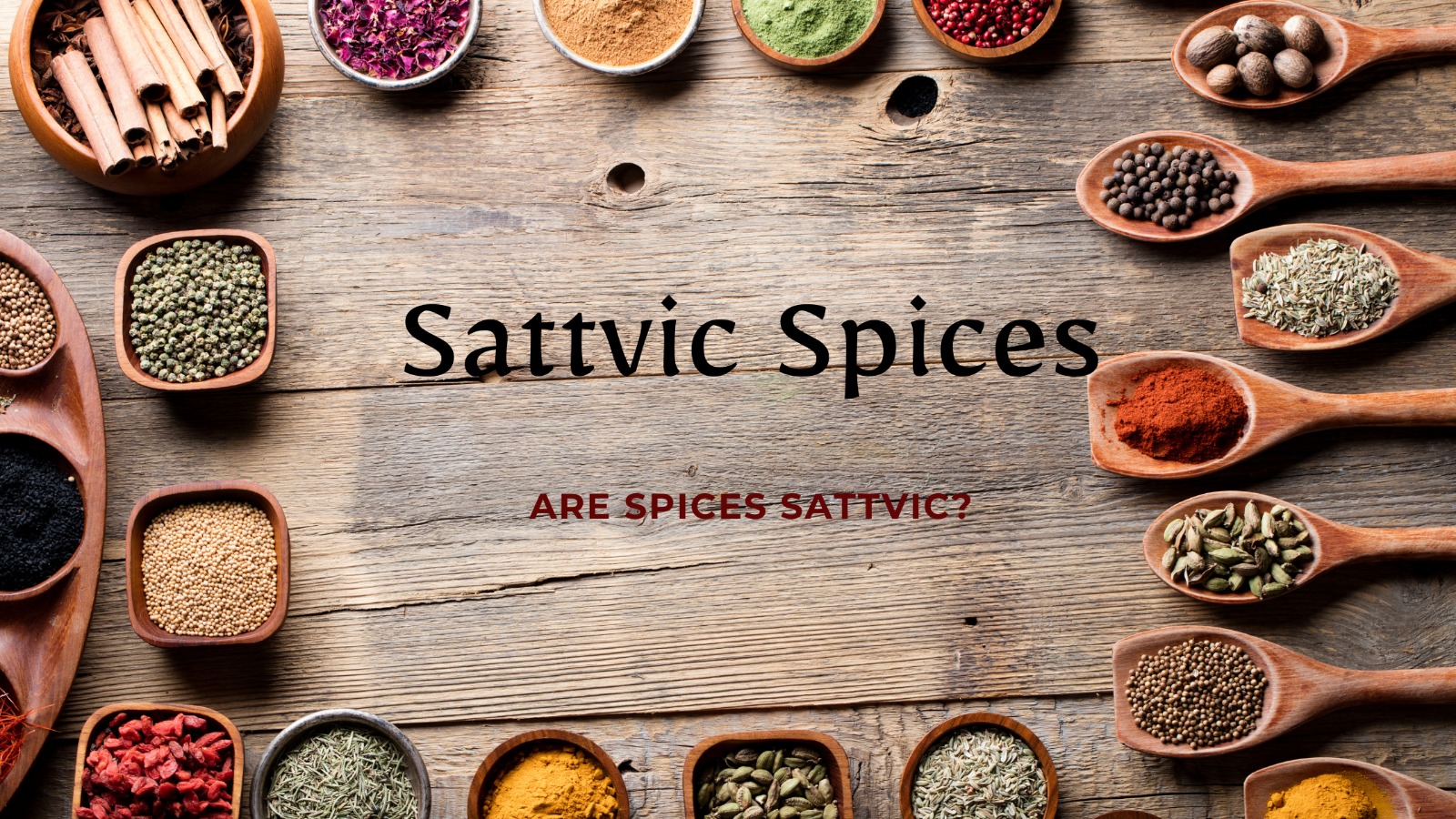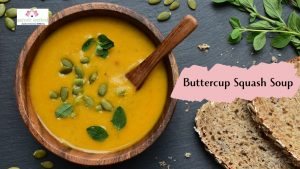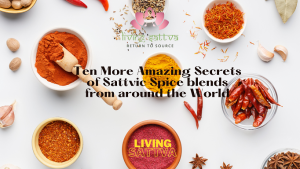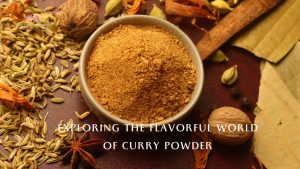When I shared the announcement of opening a Living Sattva Store on The WMarketplace, a friend asked me this question, Are spices Sattvic?
Sattva is the quality of purity and goodness that is found in all things around us. All around us are several types of fruits and vegetables, most are suitable for eating, but not all of them are sattvic. There are simple and easy ways to make our food work for us and serve us as we need to carefully choose sattvic food at every meal. Read more about the benefits of sattvic food and how it supports the body and mind.
We usually associate spices with a gastronomic function in our daily life, mainly for use in cooking. All spices we use in Hindu vegetarian cooking come from plants. We add herbs to increase taste, flavor, and a unique ingredient to activate and engage our senses. The essential oils and special chemicals in the leaves, fruits, and seeds we use as spices act as stimulants, exciting our senses.
Each spice has a specific function. For example, when we want to adjust the flavor of a recipe, we add spices in a particular concentration. Let me illustrate this concept with Easy Eggplant: In this recipe, eggplant is the recipebase. By itself, eggplant is tasteless, spongy, fruit tissue with some seeds, and the addition of a spice combo is meant to enhance the flavor of the eggplant. Let me break down the science of assembling a sattvic recipe and the choice of the species used in that recipe to clarify the meaning of these. The first step of the formula is preparing the vegetables- the recipe asks us to cook the vegetable in little oil. This step is essential because oil makes it easier to blend other chemicals present in the spices when it enters the eggplant tissue. Ivory lentils bring in a combination burst of earthy and nutty flavor, while chickpea provides a lingering taste of lentils. The essential oils in the coriander seeds have an effective after-taste when you roast and grind them, leaving a trace of lingering flavor that further fuels your senses. Adding red chilis and salt balances the heat that lingers with the blending of other spices. All these properties make a spice blend memorable and give a different taste and flavor to our food.
In this example, all the spices in the blend are made to keep the body warm or moderate. Some vegetables or herbs have the effect of cooling the body or causing excessive heat. Onion, for example, causes cooling of the body. There are several warming spices, Cinnamon is one of them. This translates to their changing physiology or the ‘mood’ of their food for many people. If we observe closely, we will know that when we eat food with certain spices, the body’s physiology is changed, and it can be noticed by instant reactions such as sweating or cooling of the body.
Spices that elicit such reactions are not sattvic. This blog post provides a list of sattvic spices used in Hindu Indian cooking. Spices outside of this list are probably not sattvic, although every new herb must be examined case-by-case. However, spices that have little sattvic properties are neither useless nor must be avoided at all costs. Although sattvic, many of these spices have medicinal properties and help to heal the body in multiple ways. Just like one would be careful about the use of medicines, we should also be cautious about the use of the spices paying attention to the frequency, quantity, and stopping to take the benefit when the condition has passed.
In addition to helping our physiology and mood, Sattvic food also supports a body capable of supporting conscious expansion. Read more about this aspect of sattvic food in this blog post.
If you want to try out sattvic food or lifestyle, here is a blog post that might help you in the process. First, eat sattvic food every day to take control of your diet and health. Then, sign up for the newsletter to know more about sattvic food and lifestyle.
Write to us with your thoughts and questions. We will answer them in future blog posts.




